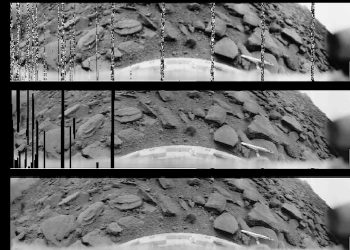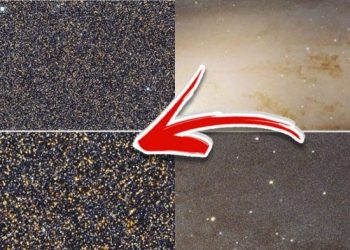In a remarkable effort to preserve human existence, scientists have encoded the entire human genome onto a revolutionary storage medium known as a “5D memory crystal.” This crystal, engineered to endure billions of years, serves as an insurance policy for humanity’s survival, safeguarding our genetic legacy for future civilizations or sentient beings who may stumble upon it long after we’re gone.
The Indestructible Crystal: A Guardian of Human Knowledge
At the heart of this project is a specially designed nanostructured glass disc, hailed as the most durable data storage medium ever created. Developed in 2014 by a team led by Peter Kazansky, a professor of optoelectronics at the University of Southampton, this “5D” memory crystal can hold an astounding 360 terabytes of data. The crystal’s stability at room temperature is virtually eternal—it’s estimated to last for 300 quintillion years, a time span so vast that it surpasses the current age of the universe. Even at extreme temperatures, such as 374°F, the crystal can endure for 13.8 billion years. It’s resistant to cosmic radiation and can withstand significant physical stress, making it the ultimate digital storage solution.
This resilient disc is designed to last long enough for any future civilization to discover and decode its content, offering a snapshot of humanity’s biological blueprint and a wealth of knowledge that may otherwise be lost to time.
In their latest work, Kazansky’s team has used this technology to encode the entire human genome, consisting of over three billion base pairs. To achieve this, ultra-fast lasers were employed to etch the DNA sequence into the crystal. Unlike traditional data storage systems that rely on two-dimensional surfaces, this technology utilizes five dimensions—two optical and three spatial—to store vast amounts of information within the glass itself.
What makes this technology groundbreaking is its ability to compress enormous datasets into a medium the size of a coin, all while preserving the information for unimaginable periods of time.
A Time Capsule for Future Civilizations
Inspired by the Voyager Golden Records sent into space in 1977, which contain symbolic representations of life on Earth, the 5D memory crystal includes visual guides to explain its use. Engraved alongside the DNA code are illustrations of human figures, the molecular structure of DNA, and diagrams of essential chemical elements. These symbols could help future civilizations understand how to synthesize human DNA or even recreate human life if they possess the necessary technological advancements.
Currently, the genome-encoded crystal is stored in the Memory of Mankind archive, a time capsule nestled deep within the Hallstatt salt mine in Austria. This project aims to safeguard human knowledge and culture for millennia, which is far from the reach of natural disasters or societal collapse.
While today’s technology cannot fully utilize the genetic information stored on the crystal, advances in synthetic biology provide a glimpse into what the future might hold. In 2010, scientists successfully created a synthetic bacterium in a lab—a milestone that suggests the possibility of artificially constructing more complex life forms, such as plants, animals, and even humans, could one day be realized.
Kazansky and his team are optimistic about what this might mean. “The 5D memory crystal opens up possibilities for other researchers to build an everlasting repository of genomic information, from which complex organisms might be restored,” Kazansky explained.
Although the crystal’s intended purpose may be far from being realized, it stands as a testament to human ingenuity, providing hope that life—human life in particular—may one day rise again, even in the face of extinction.
What Comes Next?
As technology evolves, the potential to synthesize life from stored genetic material may become a reality. For now, the encoded human genome rests securely in its salt mine archive, a silent guardian of our species’ legacy, awaiting a distant future where its secrets might be unlocked.
What do you think the future holds for synthetic biology? Could we one day see the recreation of extinct species, or even humans, based on stored genetic information?
Join the Conversation!
Have something to share or discuss? Connect with us on Facebook and join like-minded explorers in our Telegram group. For the latest discoveries and insights, make sure to follow us on Google News.











